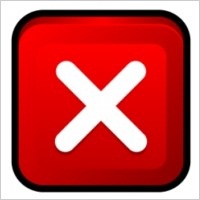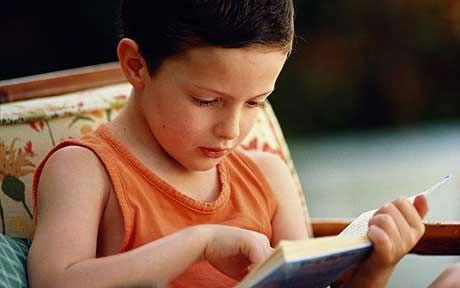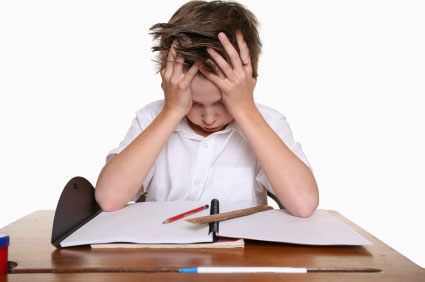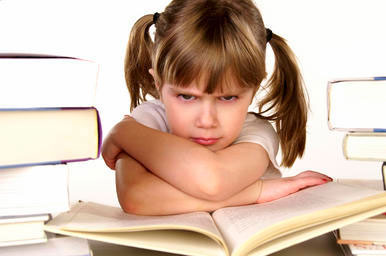Dyscalculia is a kind of dyslexia disorder. Learn more about symptoms of dyscalculia, it types and treatments. Dyscalculia is a learning disability in children. It is a kind of dyslexia and also known as mathematics dyslexia. Although 4-6 percent of world populations suffer from this disorder hardly anyone knows about it. Due to this people do not adopt suitable measures to correct this disorder. If some variations are brought about in teaching methods this disability can be corrected. Read on and know more about dyscalculia. In this articleWhat is dyscalculia?Symptoms of dyscalculiaTypes of dyscalculiaCoping with dyscalculic childWhat is dyscalculia? Children facing dyscalculia have difficulty in learning mathematics. This disorder results out of the harm caused to certain parts of brain. However the IQ level of such children is normal. Dyscalculia is also referred as arithmetic difficulty. Children facing this disorder may also have difficulty with calculating time and measurements. Though such children have problem with calculations they are good at other academic subjects. Children coping with dyscalculia may also have good writing, reading and speaking skills. Symptoms of dyscalculia Have a look at some general symptoms shown by the dyscalculic children. Immediate action should be taken after observing these symptoms. Early diagnosis and early treatment will help to save the future of the child. Difficulty in classifying the mathematical signs like plus, minus, multiplication, division Confusion while reading clock and normal changes Disability to calculate the basic cost and totaling the amount in normal life. For example disability in checking the total of bill after shopping or counting the total items shopped Disable to learn multiplication tables and carry out normal addition, subtraction and division Finding difficult to use calculators Disability to read the time-table Problem in learning and remembering mathematical rules and formulas Finding difficult to keep records and scores Disable to play games involving numbers Types of dyscalculia Dyscalculia is observed in children in many different types and subtypes. Here are some types of dyscalculia. Developmental dyscalculia Children facing developmental dyscalculia find difficult to count. They are also unable to recognise the mathematical signs. They are unable to calculate the total of numbers in writing as well as mentally. Many a times they confuse with numbers and require lot of effort to recall. Acalculia Dyscalculia which occurs during the later stages of life is known as acalculia. It is acquired due to injuries to brain or stroke. Due to this disorder person is unable to carry out normal mathematics like addition, subtraction, division and multiplication. It is different form dyscalculia as it is not acquired during normal stage of learning. Verbal dyscalculia In this type of dyscalculia a child may be able to carry out normal mathematical calculations. However child is not able to verbally name the symbols, signs or counting of the numbers and different items. Operational dyscalculia Operational dyscalculia is a problem associated with memorising the rules of mathematics. It is also associated with difficulty in applying rules during mathematical operations. It also relating to the confusion in mathematical symbols Sequential dyscalculia As the name suggest this disorder refers to disability to count numbers according to sequence. The child also has problem with calculating time, checking schedule, tracking direction and taking measurement. Coping with dyscalculic child For treating dyscalculia parents should possess lots of patience and positive attitude. This is required as it is an ongoing process involving hard work throughout. This is a very sensitive process therefore children need support and encouragement to improve. Here are some tips which will make you comfortable while undergoing this process. Identifying strengths and weaknesses You have to analyse the strengths and weaknesses of your child in the beginning. Try to work more on the core strengths and later on try to reduce the weaknesses. Help you child to realise his or her strengths and teach your child to think positively. Use the strengths of your child in such a way that it helps him or her to grasp easily. Adopting new techniques for teaching Find out the interests of your child. Try to teach your child in direction of his or her interest. For example if your child likes drawing ask him to draw the mathematical signs in different colours. This will help your child to identify the signs easily. You can also use big charts, pictures and diagrams etc to represent numbers. You can take help of the audio and video CDs to make learning easier and fun. The best way of teaching is teaching child right from basic level. Regular practice helps Once you identify the strengths, weakness and interests of your child you should chalk out a proper plan. You should design a strategy for training your child. This strategy should be exercised regularly. This will help you to keep track and mark the improvements in your child. Consistency and regular practice are the keys to the improvement of your child. Set a goal and have a strong will to complete it. Having such attitude will definitely help you to bring development in your child. As your child is doing fairly well in other subjects it will be possible to do well in mathematics too. Every child has problems with this subject some where or the other. However correcting it at the right time will make the childs future bright.
Dyscalculia is a kind of dyslexia disorder. Learn more about symptoms of dyscalculia, it types and treatments. Dyscalculia is a
learning disability in children. It is a kind of
dyslexia and also known as mathematics
dyslexia. Although 4-6 percent of world populations suffer from this disorder hardly anyone knows about it. Due to this people do not adopt suitable measures to correct this disorder. If some variations are brought about in teaching methods this disability can be corrected. Read on and know more about dyscalculia.
What is dyscalculia?
Children facing dyscalculia have difficulty in learning mathematics. This disorder results out of the harm caused to certain parts of brain. However the IQ level of such children is normal. Dyscalculia is also referred as arithmetic difficulty.
Children facing this disorder may also have difficulty with calculating time and measurements. Though such children have problem with calculations they are good at other academic subjects. Children coping with dyscalculia may also have good writing, reading and speaking skills.
Symptoms of dyscalculia
Have a look at some general symptoms shown by the dyscalculic children. Immediate action should be taken after observing these symptoms. Early diagnosis and early treatment will help to save the future of the child.
- Difficulty in classifying the mathematical signs like plus, minus, multiplication, division
- Confusion while reading clock and normal changes
- Disability to calculate the basic cost and totaling the amount in normal life. For example disability in checking the total of bill after shopping or counting the total items shopped
- Disable to learn multiplication tables and carry out normal addition, subtraction and division
- Finding difficult to use calculators
- Disability to read the time-table
- Problem in learning and remembering mathematical rules and formulas
- Finding difficult to keep records and scores
- Disable to play games involving numbers
Types of dyscalculia
Dyscalculia is observed in children in many different types and subtypes. Here are some types of dyscalculia.
Developmental dyscalculia Children facing developmental dyscalculia find difficult to count. They are also unable to recognise the mathematical signs. They are unable to calculate the total of numbers in writing as well as mentally. Many a times they confuse with numbers and require lot of effort to recall.
Acalculia Dyscalculia which occurs during the later stages of life is known as acalculia. It is acquired due to injuries to brain or stroke. Due to this disorder person is unable to carry out normal mathematics like addition, subtraction, division and multiplication. It is different form dyscalculia as it is not acquired during normal stage of learning.
Verbal dyscalculia In this type of dyscalculia a child may be able to carry out normal mathematical calculations. However child is not able to verbally name the symbols, signs or counting of the numbers and different items.
Operational dyscalculia Operational dyscalculia is a problem associated with memorising the rules of mathematics. It is also associated with difficulty in applying rules during mathematical operations. It also relating to the confusion in mathematical symbols
Sequential dyscalculia As the name suggest this disorder refers to disability to count numbers according to sequence. The child also has problem with calculating time, checking schedule, tracking direction and taking measurement.
Coping with dyscalculic child
For treating dyscalculia parents should possess lots of patience and positive attitude. This is required as it is an ongoing process involving hard work throughout. This is a very sensitive process therefore children need support and encouragement to improve. Here are some tips which will make you comfortable while undergoing this process.
Identifying strengths and weaknesses You have to analyse the strengths and weaknesses of your child in the beginning. Try to work more on the core strengths and later on try to reduce the weaknesses. Help you child to realise his or her strengths and teach your child to think positively. Use the strengths of your child in such a way that it helps him or her to grasp easily.
Adopting new techniques for teaching Find out the interests of your child. Try to teach your child in direction of his or her interest. For example if your child likes drawing ask him to draw the mathematical signs in different colours. This will help your child to identify the signs easily. You can also use big charts, pictures and diagrams etc to represent numbers. You can take help of the audio and video CDs to make learning easier and fun. The best way of teaching is teaching child right from basic level.
Regular practice helps Once you identify the strengths, weakness and interests of your child you should chalk out a proper plan. You should design a strategy for training your child. This strategy should be exercised regularly. This will help you to keep track and mark the improvements in your child. Consistency and regular practice are the keys to the improvement of your child.
Set a goal and have a strong will to complete it. Having such attitude will definitely help you to bring development in your child. As your child is doing fairly well in other subjects it will be possible to do well in mathematics too. Every child has problems with this subject some where or the other. However correcting it at the right time will make the child's future bright.

































